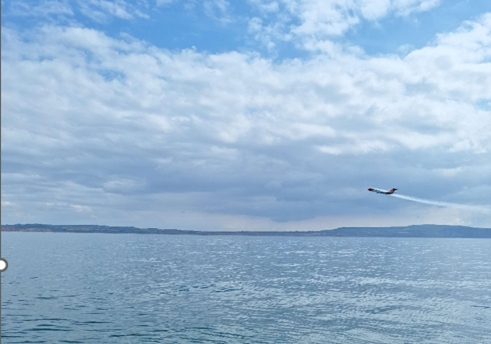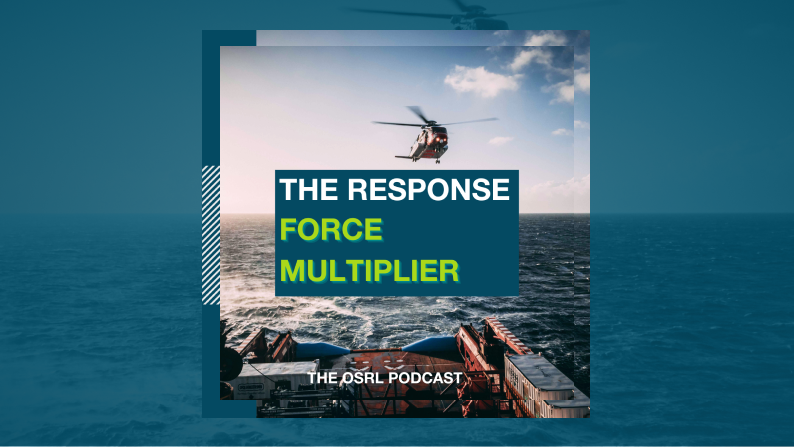Surface Dispersants Exercise
Effective Oil Spill Response: The Critical Role of Dispersants and NEBA Analysis
Dispersants are an important tool in the oil spill response toolkit. Their value stems from their ability to quickly treat large areas of oil pollution to prevent contamination of sensitive shorelines, which in turn, reduces risk to environmental and socio-economic resources. The use of dispersant, like any oil spill response technique, relies upon determining a clear net environmental benefit of the overall response strategy. Net Environmental Benefit Analysis (NEBA) ensures that all techniques are prudent and proportionate to mitigate the environmental impact of the incident. The use of dispersants often requires approval from government authorities, both in terms of the dispersant type used and the specific use case in each incident. The overall effectiveness of dispersant relies on good technical application and operational monitoring by skilled responders who regularly attend training sessions and practice exercises to maintain their competence at the highest level. This is why OSRL invested in this full week of realistic training off the coast of the Isle of Wight.
OSRL's Global Response Team and Response Partner's Assets in Action
On the week of June 10th , OSRL executed a full deployment exercise, mobilising 25 response personnel from around the world in addition to key response assets such as the Boeing 727 spray aircraft, United Kingdom Continental Shelf (UKCS) Spotter aircraft, an offshore vessel, and water column monitoring equipment. OSRL’s Response partners, 2Excel Aviation and Williams Shipping, also assisted the exercise.

New Technologies and Incident Hub Coordination During Exercise
During the exercise, new technologies were trialled related to dispersant effectiveness monitoring using a range of Marine Autonomous Systems (MAS). Companies including Jaia Robotics, RS Aqua and Deeptrekker, attended the deployment and collected water column data over the course of the week. The exercise team then used the data to show different outputs which could be used to illustrate dispersant effectiveness during a real-world oil spill event. The data was shown in a 3D model, which illustrated the dispersing dye against water depth and lat/long.
The exercise scenario was that of an offshore oil spill southeast of the Isle of Wight, which required the mobilisation of significant assets to combat the spill. To help coordinate the response from the Emergency Operating Centre (EOC) in Southampton, OSRL’s geomatics team generated an ‘Incident Hub.’
The Incident Hub is a digital platform that transforms raw data into actionable insights, ensuring every stakeholder involved in an incident receives timely and accurate information. The hub displayed live data such as vessel, aircraft and personnel location as well as live MAS environmental data.

Simulated Oil Spill Exercise: Fluorescein Dye, Aerial Surveillance, and Dispersant Effectiveness Monitoring
On the water, the use of fluorescein dye simulated the oil spill in the field acting as a target for the aircraft and a changing environmental parameter for the AUVs to monitor Over the course of the exercise operations included five sorties of the 727 aircraft, spraying approximately 24,600 litres of water (simulating dispersant) successfully on-target and eight UKCS Spotter and Aerial surveillance flights where the responders could refine polish their skills in quantification and classification of oil spills, directing operations and creation of over-flight reports. Surface Dispersant Exercise Incident Hub.
727 Spraying Dispersant over a pre-planned target.
Offshore, response specialists conducted a successful boat spray using the Afedo Nozzle system and the MAS equipment proved to be a promising tool for improved SMART (Special Monitoring of Applied Response Technologies) dispersant effectiveness monitoring, presenting comprehensive graphics aiding the decision-making process about dispersant use.
The equipment can receive Fluorometer sensor to monitor water column as part of the SMART (Special Monitoring of Applied Response Technologies) dispersant effectiveness monitoring.
Importance of Training Exercises in Oil Spill Response Readiness: OSRL's Commitment to Excellence
Exercises play a critical role in maintaining readiness for oil spill response. They allow responders to hone their skills, test procedures and reports, and consolidate team collaboration. Conducting frequent exercises to continually strengthen essential technical skills is a fundamental part of OSRL’s commitment to ensuring a first-class service is always ready to respond









